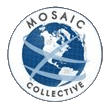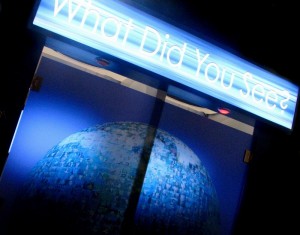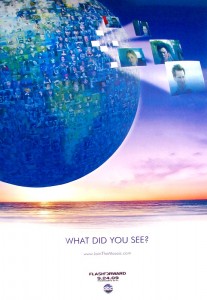 Perhaps this article would be better entitled: Why I love Halo: An Epic Analysis.
Perhaps this article would be better entitled: Why I love Halo: An Epic Analysis.
 I’m not a Halo fanatic…relatively speaking. I’m not shy about being an enormous fan of the Halo franchise, but I don’t own a Master Chief costume, nor have I ever worn one. I don’t know every little intricate detail of the Halo universe. I can’t ramble off stats, ID numbers, the name and rank of every known character. I don’t play the video game most of the day, every day, and it’s a fat chance I’d “pwn” anyone in multiplayer these days if I did. At all. I’m what you might consider a discoverer, or a story enthusiast.
I’m not a Halo fanatic…relatively speaking. I’m not shy about being an enormous fan of the Halo franchise, but I don’t own a Master Chief costume, nor have I ever worn one. I don’t know every little intricate detail of the Halo universe. I can’t ramble off stats, ID numbers, the name and rank of every known character. I don’t play the video game most of the day, every day, and it’s a fat chance I’d “pwn” anyone in multiplayer these days if I did. At all. I’m what you might consider a discoverer, or a story enthusiast.
 I was an early adopter of the original Xbox back in 2001, due solely to previews of Halo: Combat Evolved. At that point, I was a gamer. My friends at first were annoyed with my constant raving about Halo, yet many eventually caved and began playing as well – and soon, much more than me. My game-playing fanaticism and multiplayer skill slowly faded as I was drawn further into the mystery, the story world that had been created by Bungie Studios.
I was an early adopter of the original Xbox back in 2001, due solely to previews of Halo: Combat Evolved. At that point, I was a gamer. My friends at first were annoyed with my constant raving about Halo, yet many eventually caved and began playing as well – and soon, much more than me. My game-playing fanaticism and multiplayer skill slowly faded as I was drawn further into the mystery, the story world that had been created by Bungie Studios.
I would not hesitate in the slightest to refer to the Halo franchise as “Epic”.
Quite often I compare the potential scope of this universe to that of Star Trek or Star Wars. To me, for a story to be epic, it must have potential to become a ‘part of the whole’, a story told within what feels to be a much, much larger untold story. For an epic to be successful in my opinion, it needs to employ a certain formula. It needs first to be told from the perspective of an individual, or providing only a very small portion of the larger picture, and still make a personal connection with the audience. If done right, this story alone would capture its audience.
Consider recent entertainment franchises like Terminator, The Matrix, Lord of the Rings, Harry Potter, or even the Chronicles of Riddick. Each begins by telling a self-contained story from a single perspective, while leaving many questions unanswered in the end. Sarah Connor has to survive against a deadly killing machine from the future. Neo strives desperately to discover and understand what the Matrix is. The little hobbits in peaceful Hobbiton have their worlds turned upside by an unknown, evil force. Harry potter learns about a strange, magical, hidden world. The convict Riddick uses his extreme skills to survive and escape a deadly planet. Each of these tease at a larger universe with untold stories, but begin with an engaging tale of discovery or exploration of something unknown.
Enter Master Chief, Spartan John-117.
 Presuming one knows nothing of the previous, indirectly related Marathon titles – with Halo, we begin from the Chief’s perspective, opening up not only in the middle of a war we know nothing about, but making that first, eerie discovery of a foe that threatens much more than we could imagine (I will never forget watching for the first time the cinematic cutscene in which the Chief discovers the Flood). Already, the premise is clear that this isn’t just a self-contained video game story, but actually only a very small window into a universe filled with history and a future, conflict, and characters that truly feel as if they have backstories and full lives.
Presuming one knows nothing of the previous, indirectly related Marathon titles – with Halo, we begin from the Chief’s perspective, opening up not only in the middle of a war we know nothing about, but making that first, eerie discovery of a foe that threatens much more than we could imagine (I will never forget watching for the first time the cinematic cutscene in which the Chief discovers the Flood). Already, the premise is clear that this isn’t just a self-contained video game story, but actually only a very small window into a universe filled with history and a future, conflict, and characters that truly feel as if they have backstories and full lives.





